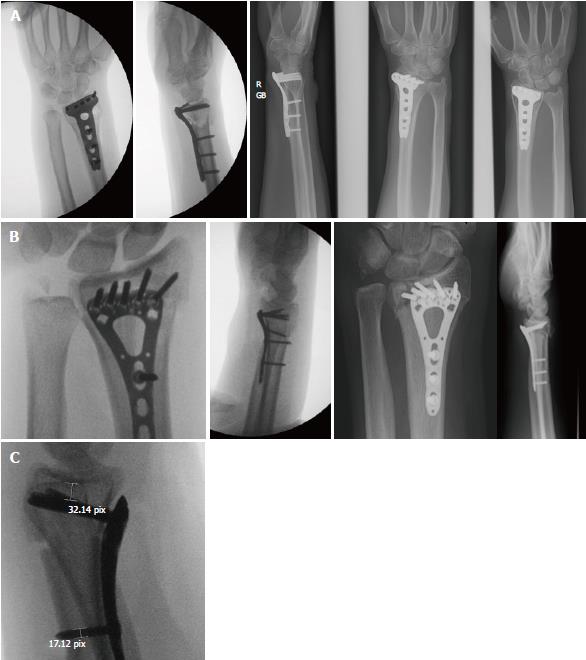Copyright
©The Author(s) 2018.
World J Orthop. Oct 18, 2018; 9(10): 203-209
Published online Oct 18, 2018. doi: 10.5312/wjo.v9.i10.203
Published online Oct 18, 2018. doi: 10.5312/wjo.v9.i10.203
Figure 1 Examples of distal screw placement.
A: Intraoperative image shows that screws are placed immediate to the subchondral joint line. Postoperative image does not show any loss of reduction; B: Placing the screws at a distance from the subchondral joint line causes postoperative loss of radial length; C: Intraoperative measurement. As the diameter of the screws was known, the distance of the screws was able to be calculated.
Figure 2 Correlation of loss of radial length (mm) and distance of distal locking screws from the subchondral joint line (mm) of 250 patients with dorsally displaced distal radius fractures managed with volar locking distal radius plates.
The linear regression line was: radial shortening = 0.7 mm + 0.38 × distance from joint line (mm) (P < 0.001).
- Citation: Drobetz H, Black A, Davies J, Buttner P, Heal C. Screw placement is everything: Risk factors for loss of reduction with volar locking distal radius plates. World J Orthop 2018; 9(10): 203-209
- URL: https://www.wjgnet.com/2218-5836/full/v9/i10/203.htm
- DOI: https://dx.doi.org/10.5312/wjo.v9.i10.203










